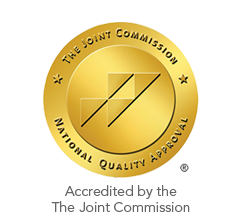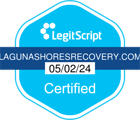What You Need to Know About Ketamine and Addiction
While often used as an anesthetic, it can also relieve pain and produce relaxation at lower doses. It is considered safe as an anesthetic because it does not reduce blood pressure or lower breathing rates when given at the proper dose. It is also very useful in less developed countries and in disaster zones (e.g. war), as it does not require an electrical supply, oxygen, or specially trained staff to be used medically.
Laguna Shores Recovery offers several services and programs for prescription drug addiction. Our Mission Viejo ketamine rehab is part of a specialized treatment program that is designed to help those who are struggling with addiction. Our treatment center is dedicated to teaching healthy and effective coping skills that will lead to lasting recovery.
History of Ketamine
Names of Ketamine
Brand Names
Ketalar
Ketanest
Ketaset
Ketaject
Vetalar
Street Names
Cat tranquilizers
Cat valium
K
Ket
KitKat
Purple
Special K
Super K
Vitamin K
What does Ketamine Look Like and How is it Taken?
Used for medical purposes, it is a colorless, tasteless, and odorless liquid that is typically injected into a muscle or into the bloodstream. This injection is given in a hospital or other clinical setting but not at home.
When ketamine it is sold illegally, it is usually converted into a white powder. It might also be found in the form of capsules, tablets, or crystals. The powder can be snorted, mixed into beverages, or dissolved back into liquid form to be injected.
Uses of Ketamine
General Anesthesia
In humans, it can be used to induce general anesthesia before, during, and after surgery and is typically used for patients who don’t respond well to other anesthetics. It is also used in less developed countries and in emergency scenarios such as war zones because it is easy to store safely.
Medical Uses
In medical practice, ketamine is used in a variety of procedures including:
- Cardiac catheterization
- Skin grafts
- Orthopedic procedures
- Eye, ear, nose, throat diagnostic procedures
- Minor surgeries such as dental extractions
- Burn treatment
- Chronic pain management
- Cancer treatment
- Control seizures in epilepsy patients
As you can see,it is a versatile drug that can be used for many medical uses.
Treatment for Depression
For patients with suicidal urges and chronic depression, ketamine may be used at a controlled dose in order to lift the depression. Once the person has been lifted out of that deep feeling of despair, the root causes of the depression can be more easily addressed and managed through more traditional depression treatments such as therapy and medication. Because using the drug can result in an out-of-body experience, it has been shown to be able to change the mood and feelings of a person who has been experiencing chronic and severe depression.
Nasal Mist Depression Treatment
In recent years, there have also been studies that have looked at a more controlled long-term use to treat depression. A nasal mist containing ketamine was developed by John Krystal, chief of psychiatry at the Yale-New Haven Hospital.
This nasal mist is administered about once a week, and in some people has been shown to ease symptoms of depression in just a few hours. This is still in its trial stage and has yet to be approved by the FDA for clinical use. However, it shows enormous promise for helping people with depression who don’t respond to other forms of treatment.
Concerns About Using Ketamine to Treat Depression
Of course, due to the addictive properties of ketamine, there is great hesitation around using it to treat depression. There is also a fear that once a person stops using it, they may experience a strong return of depressive symptoms, putting them at a higher risk of suicide after experiencing feelings of euphoria and then feeling suddenly very depressed again.
Side Effects
Common Side Effects
Some common side effects include:
- Visual disturbances
- Double vision
- Hallucinations
- Confusion/disorientation
- Increased heart rate
- Increased blood pressure
- Nausea/vomiting
- Euphoria
- Uncontrolled eye movements
- Unusually warm skin
- Sedation
- Weight loss
Uncommon Side Effects
Some rarer but more serious side-effects include:
- Difficulty talking
- Abnormal movements
- Slowed or depressed breathing
- Severe allergic reaction (hives, difficulty breathing, swollen face, lips, tongue, throat)
- Hypotension
Recreational Side Effects
- Bloody/cloudy pee
- Amnesia
- Addiction
- Trouble peeing/needing to pee often
- Pale/blue lips, skin or nails
- Blurry vision
- Chest pain, discomfort, tightness
- Confusion
- Convulsions
- Dizziness/fainting
- Hives, itching, rash
- Delusions
- Puffy/swollen eyelids, lips, tongue
- Sweating
- Unusual tiredness or weakness
- Psychosis
It is advisable to call your doctor or an ambulance if experiencing these severe effects.
Can You Overdose on Ketamine?
It is harder to overdose on ketamine than on other illegal drugs. However, combining it with other substances such as alcohol can increase the risk of overdose and can be fatal.
How Many People Use Ketamine?
The Substance Abuse and Mental Health Services Administration’s (SAMHSA) 2017 and 2018 National Surveys on Drug Use and Health give us an idea of how many people have reported using it recreationally in the last few years.
In 2017, 3,463 people aged 12+ reported using ketamine recreationally during their lifetime. In 2018, this number rose slightly to 3,622. In comparison to other hallucinogens such as LSD which was used by 27,339 people in 2018, the numbers are relatively low. Of the 15.8% of people who reported using hallucinogens in 2018, only 1.3% of those people attributed their hallucinogen use.
It is important to keep in mind that these numbers only capture those who have reported their drug use, meaning that there are likely many more people who have not reported their drug use for a variety of reasons.
What Age Group Uses Ketamine Recreationally the Most?
The SAMSHA 2018 National Survey on Drug Use and Health reported that 19 people between the ages of 12-17, 505 people aged 18-25, and 3,098 people over the age of 26 reported using ketamine. In comparison to many other illicit drugs, these numbers are fairly low. However, it is clear that recreational use is most popular among young adults. In the year 2000, the Drug Abuse Warning Network reported that people aged 12-25 accounted for 74% of emergency department visits related to ketamine use.
Ketamine Abuse
Unfortunately, recreational use has increased significantly since ketamine was first introduced as a drug and it is used worldwide in party culture. Ketamine has also been labelled as a “rape drug” because it can easily be slipped into someone’s drink and can cause a person to become unconscious.
Ketamine Addiction
Addiction is characterized by cravings for the drug, an increasing tolerance towards it where more of the drug is needed to achieve the same high, and a dependence on the drug where the body learns to function with it. When an individual becomes preoccupied with ketamine and begins neglecting family, friends and responsibilities, there is a chance they are developing an addiction.
- Distracted/difficult concentration
- Drowsiness/fatigue
- Reduced ability to feel pain
- Loss of coordination
- Slurred speech
- Flushed skin
- Insomnia
- Bladder pain
- Overdose
If you believe you might be at risk for ketamine addiction or know somebody that is, it is advisable to call your doctor and to seek help. There are a variety of treatment options and help is always available to you. There is no need to feel ashamed or embarrassed as addiction is something that many people struggle with worldwide.
When you use ketamine repeatedly for a long period of time, an addiction to the drug can develop. Having a drug addiction means that tolerance towards the drug has increased. In other words, you need more and more of the substance to achieve the same effects and feelings. Your body also becomes dependent on the drug, so if you stop using ketamine abruptly, you can experience a variety of unpleasant symptoms.
Ketamine takes approximately 14 to 18 hours to leave your system, but this time frame depends on each individual. Withdrawal symptoms typically last around 4-6 days, starting 24-72 hours after the last use.
Symptoms of withdrawal can include:
- Depression
- Anxiety
- Rapid heartbeat
- Fatigue
- Lack of appetite
- Insomnia
- Nightmares
- Restlessness
- Tremors
- Sweating/chills
- Anger
What are Ketamine Addiction Treatment Options?
Much like with other types of drug addiction, counseling aims to tackle the root causes of addiction and help a person to change their patterns of thinking in order to help them realize why they might be using a particular drug and if there might be healthier methods of coping available.
Ketamine addiction treatment may occur on an inpatient, outpatient, or residential basis. There are no specific medications that are used in the treatment of addiction, but other medications might be used to treat potentially co-occurring psychiatric conditions such as anxiety or depression. Individuals struggling with these conditions may also benefit from an anxiety self test to better understand their symptoms and guide appropriate treatment.
Common Ketamine Misconceptions
Some people believe that because ketamine is used for anesthetic purposes, it is not addictive in the same way that other drugs might be. This is false, as you can become addicted to ketamine, wanting to experience the out-of-body euphoric feeling that comes with a ketamine high.
While some people believe that ketamine causes hallucinations and psychosis, that is not necessarily true. While ketamine might cause symptoms of psychosis in people who have already experienced psychosis, it does not in itself cause psychosis. Ketamine can propel you into a dreamlike state and give you an out-of-body experience, but it is unlikely to cause psychosis to the regular user.
Because ketamine is known as a club drug, many people think that it is okay to mix alcohol with ketamine. In reality, mixing the two substances together can lead to worse side effects, more extreme memory loss, sedation, and potentially overdose. In 2011, there were 1,550 recreational ketamine use-related emergency department visits, of which 71.5% also involved alcohol.
Due to its use in spiritual practices and in the exploration of altered states of consciousness, some people believe that ketamine can help you become enlightened and give insight into the world around you. The truth is that hallucinations and the out-of-body experiences that you might feel after taking ketamine are simply a product of the mind and are not a reflection of reality.
Despite the fact that ketamine has strong sedative properties, there seems to be a misconception that ketamine will cause you to engage in negative or illegal behavior. The truth is that ketamine makes you feel disconnected from your body, often leaving users unable to move or communicate, leaving little room for engaging in illegal activity.
Because ketamine is sometimes called horse tranquilizer on the street, some people believe that that’s what it really is. While it is true that ketamine is used for veterinary purposes and to sedate animals, it is also safe for human use in clinical settings and when administered by a health professional.
Another common misconception that people have about ketamine is that it is not a safe medication to use and that it is a psychedelic drug used by crazy people and party-goers. While ketamine can be abused when used recreationally, it is safe to use in clinical settings when administered by a health professional in an appropriate dose. There is no need to be afraid of ketamine as it has many safe uses that have been approved by the FDA.

 Matthew Beck B.A, M.A, LMFT
Matthew Beck B.A, M.A, LMFT 


